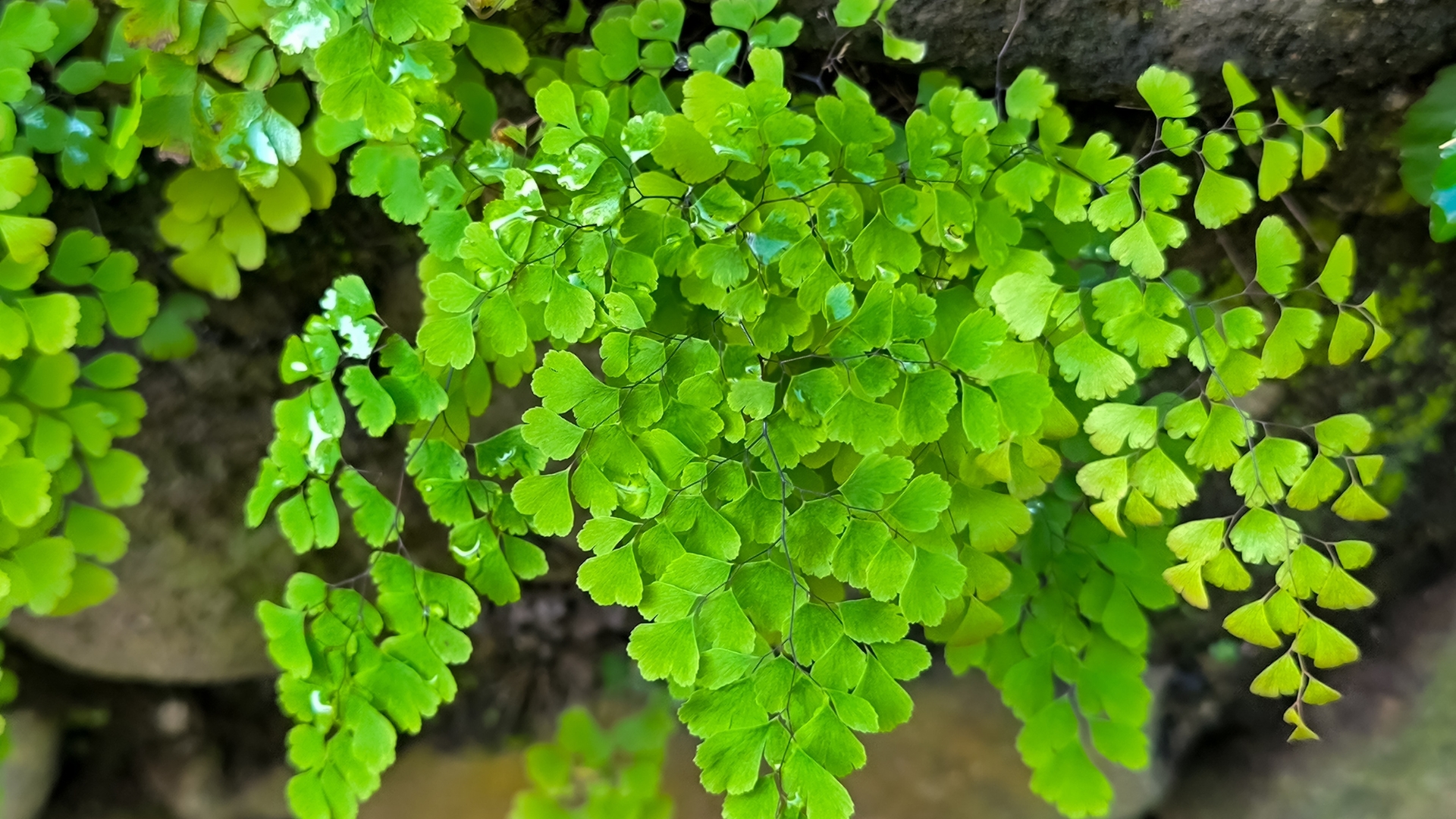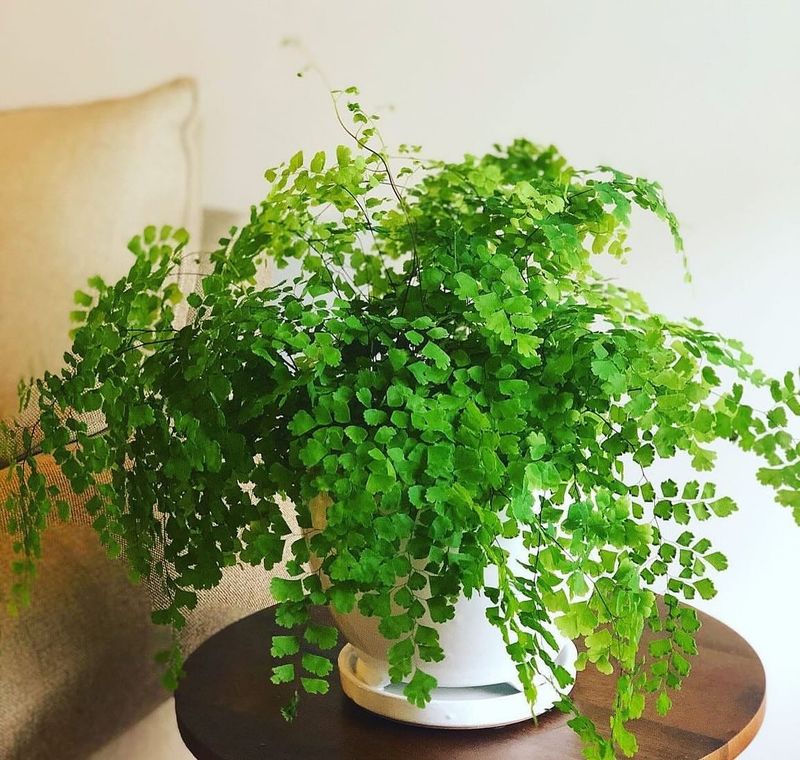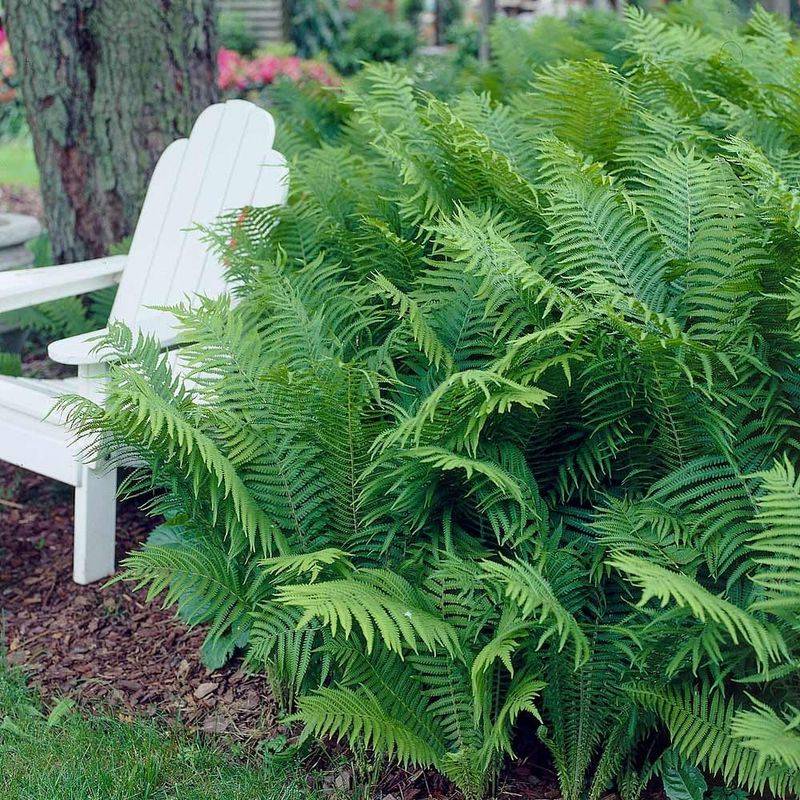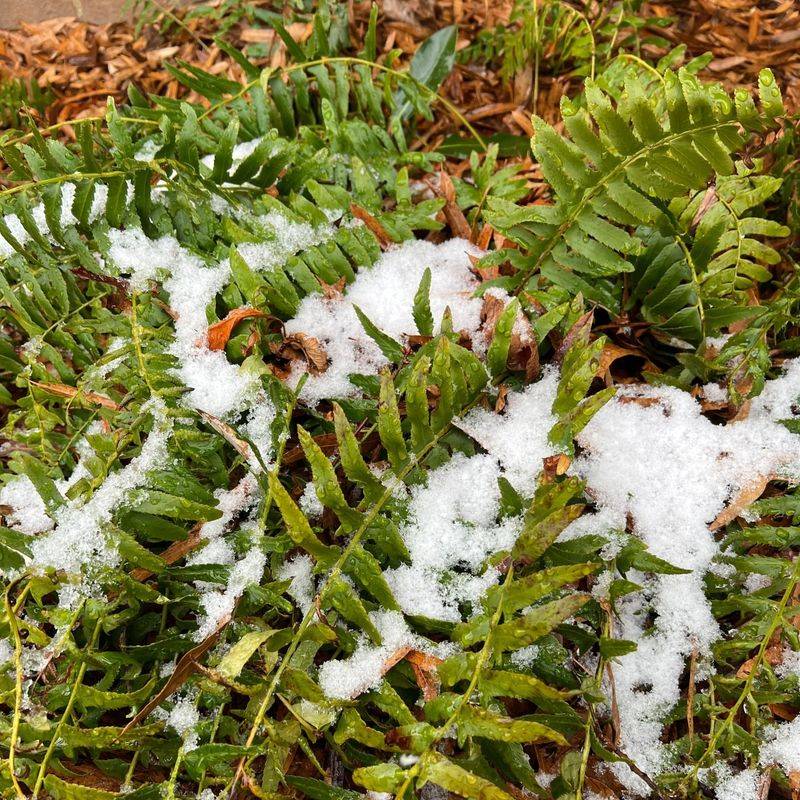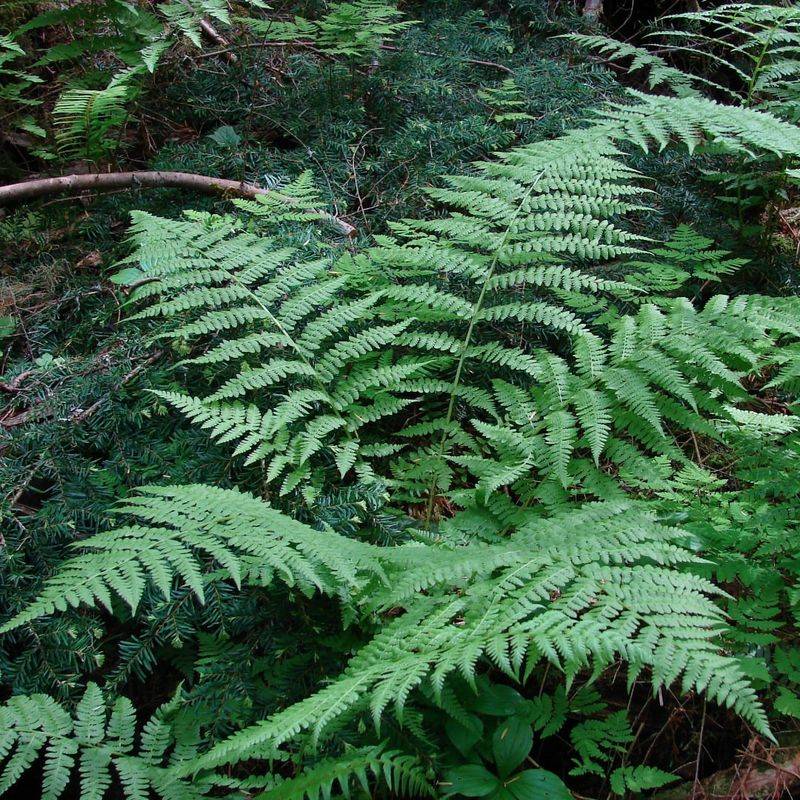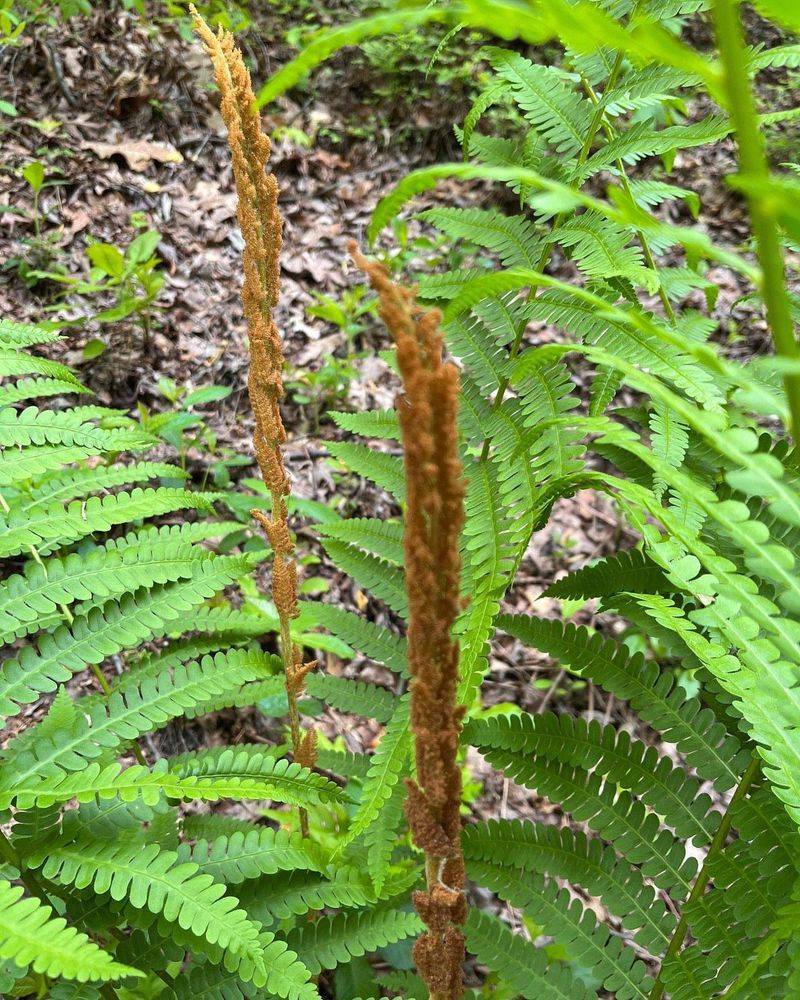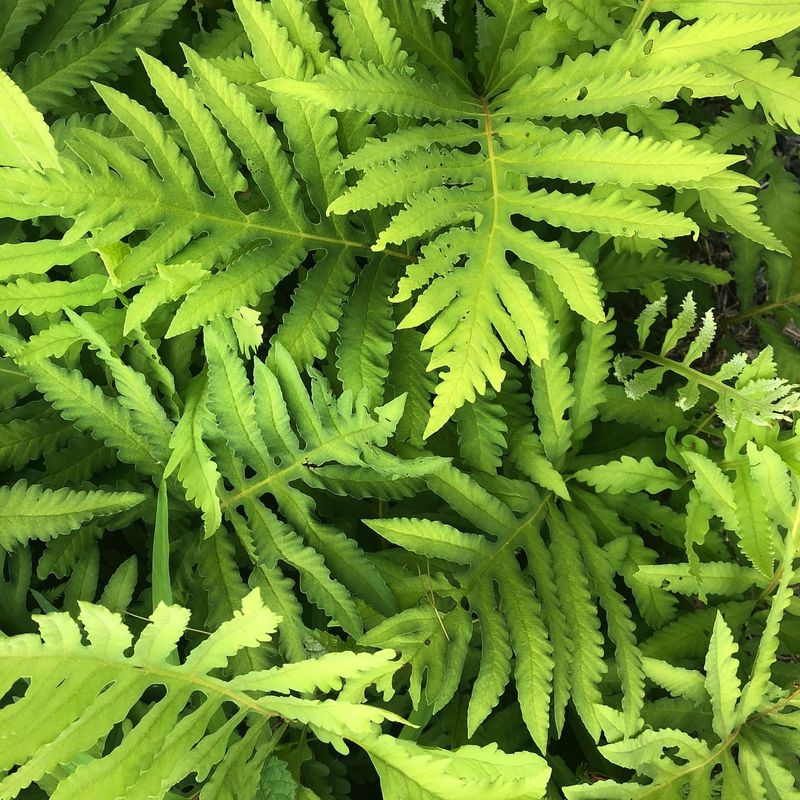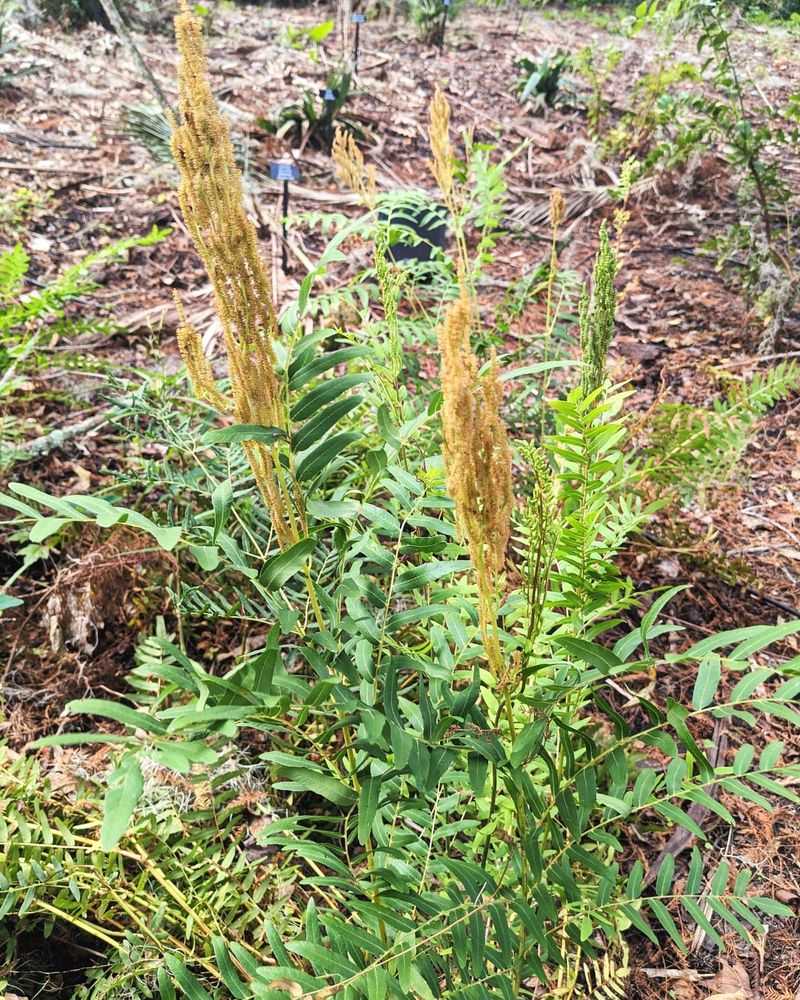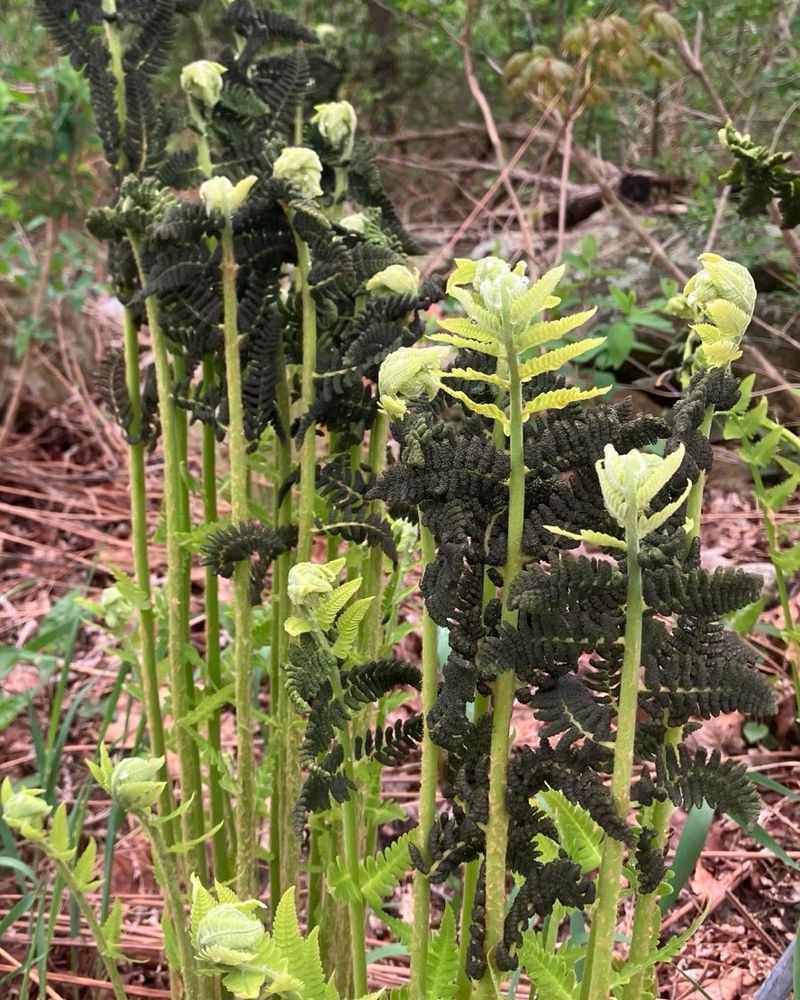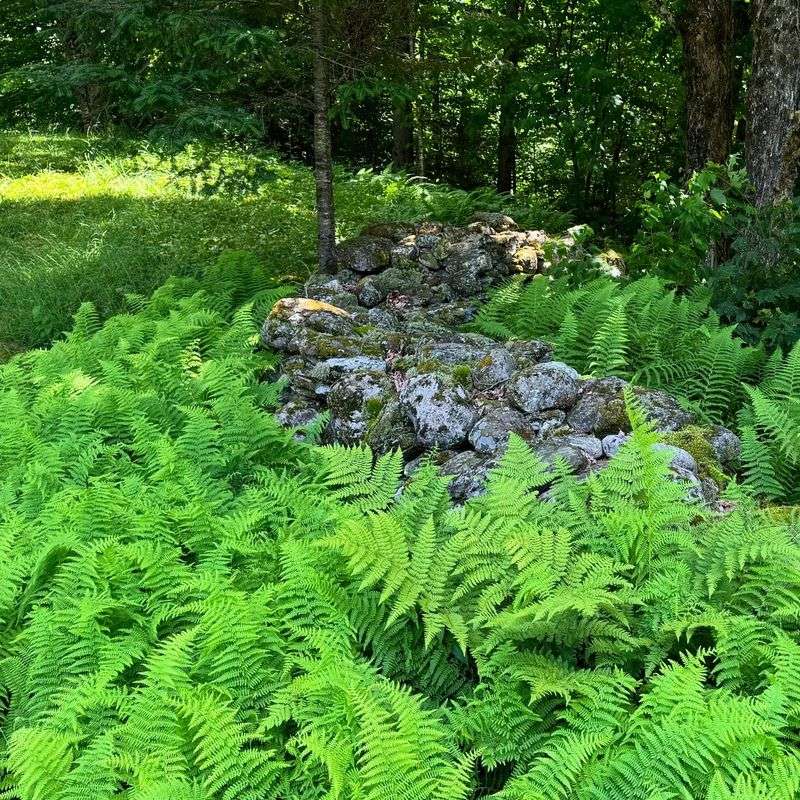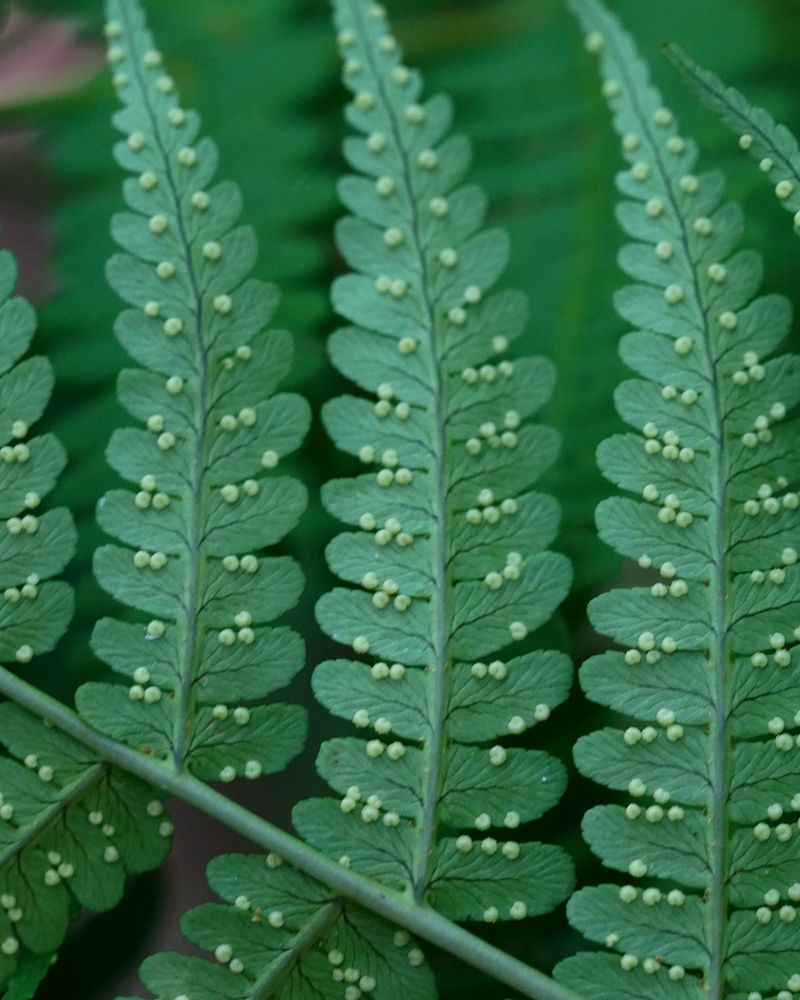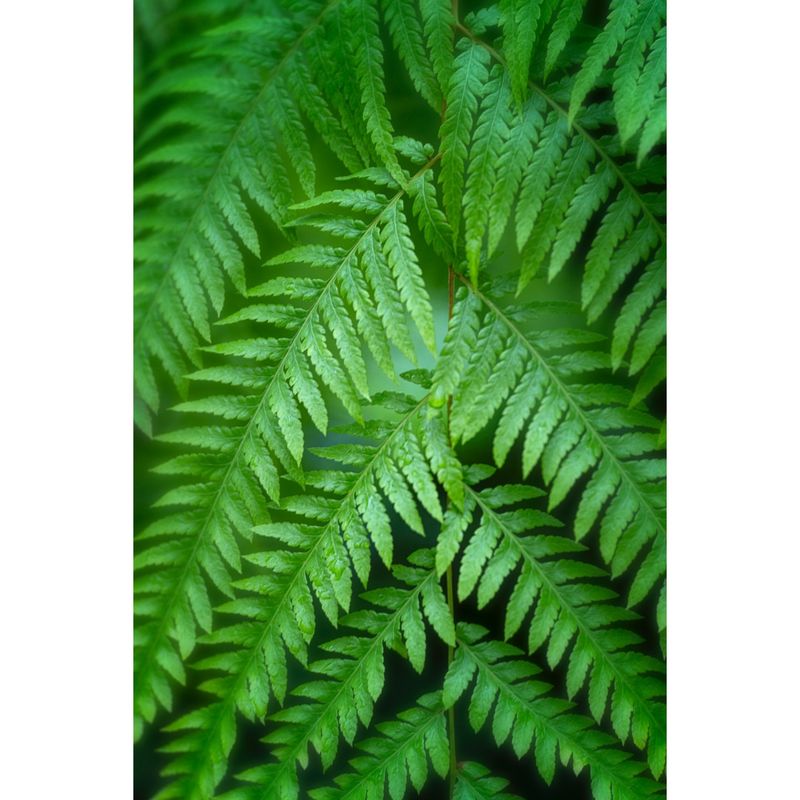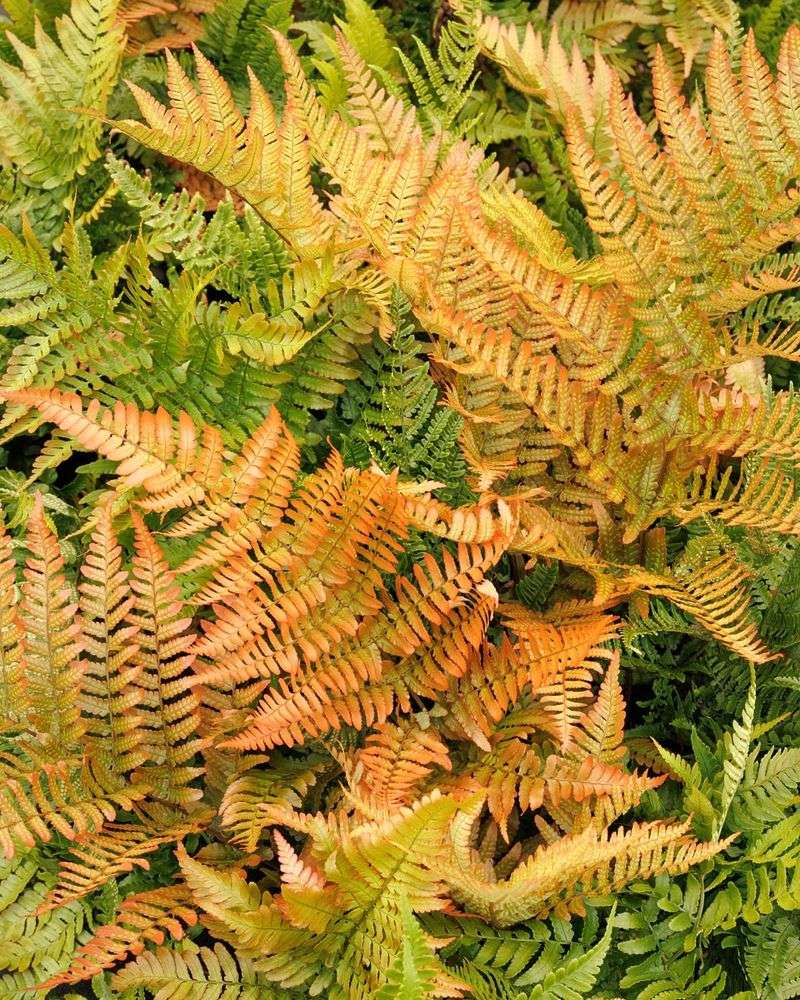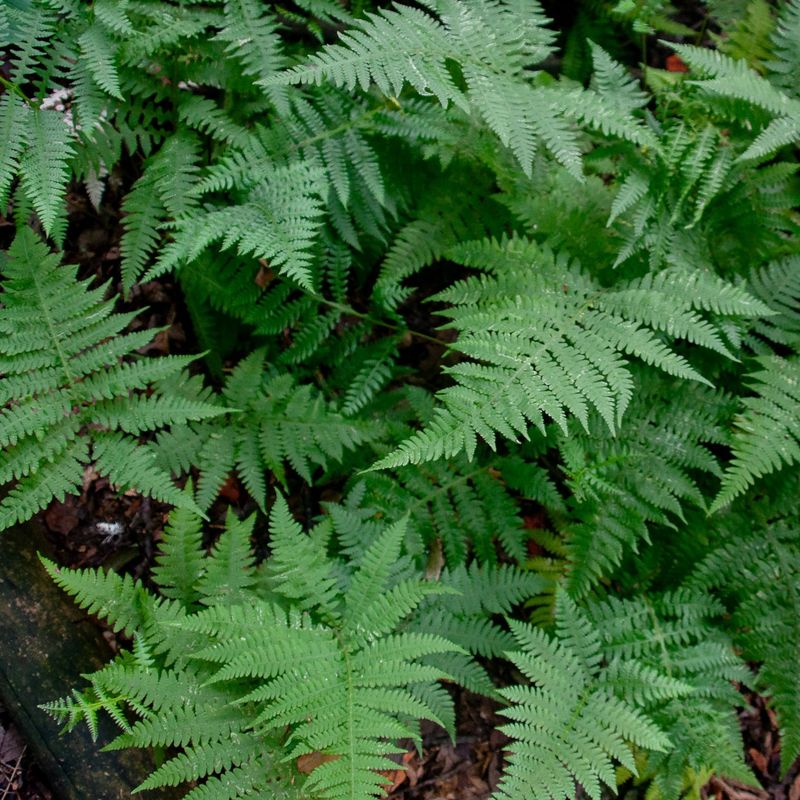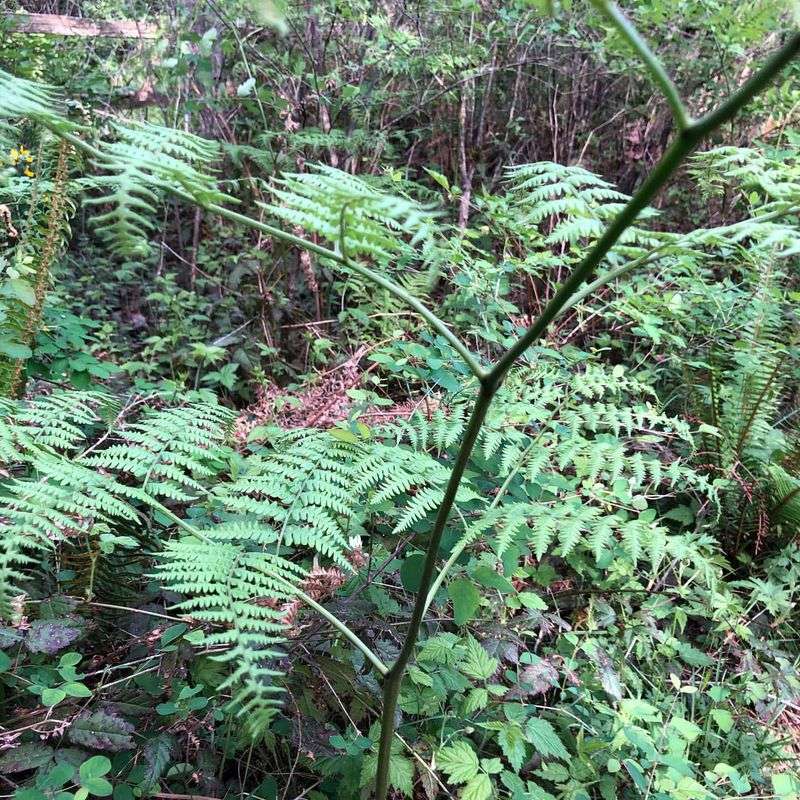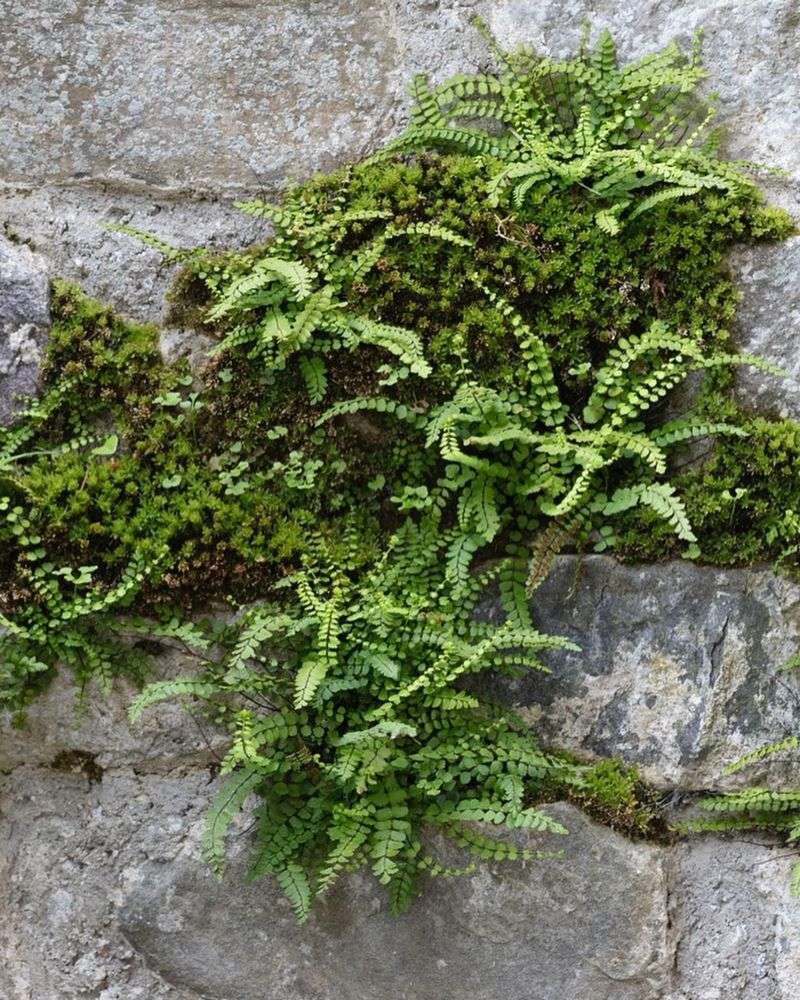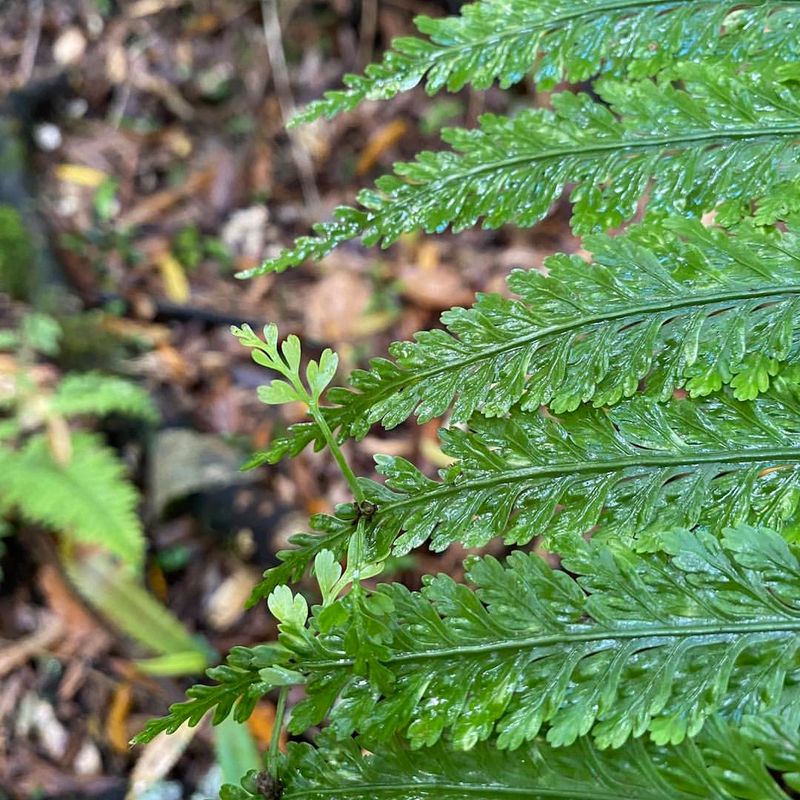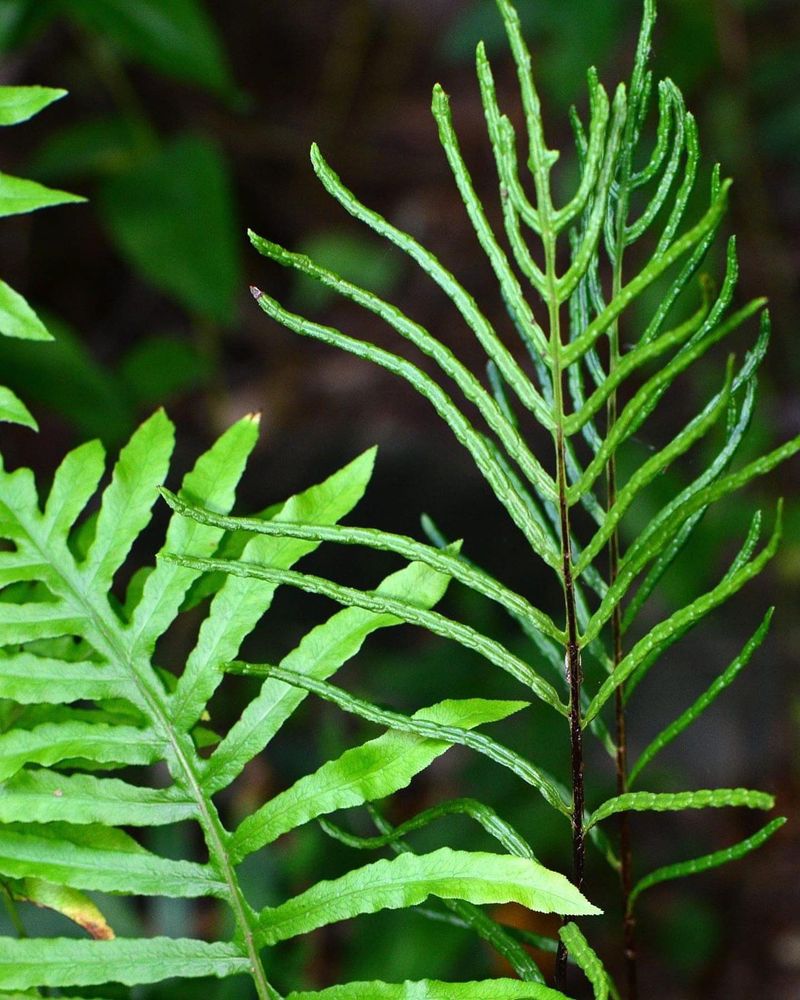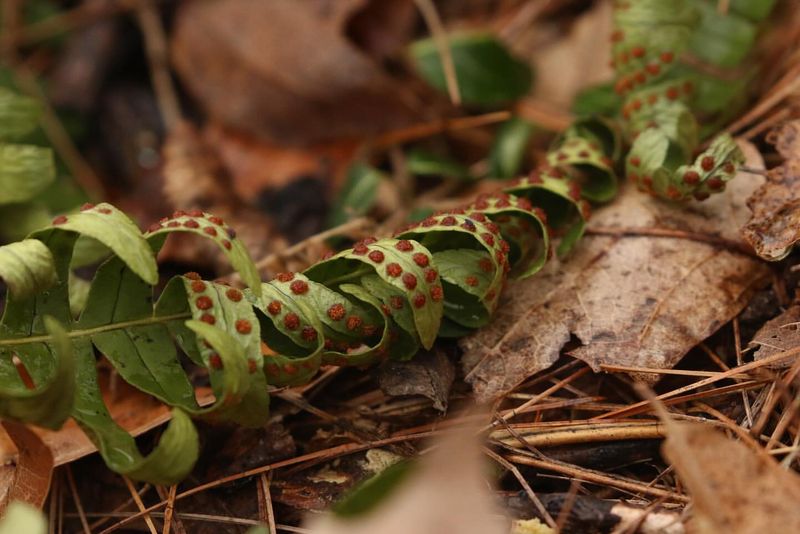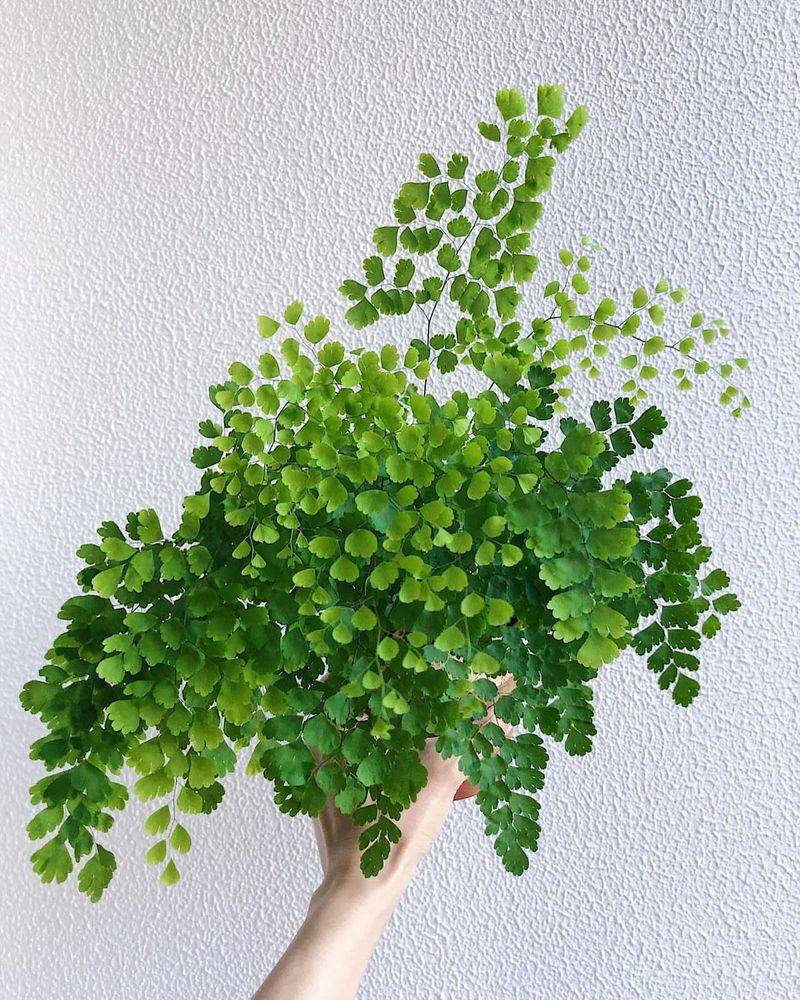If you love the lush look of ferns but want to keep things local, native ferns are the way to go. These green gems bring charm and resilience to your garden like no exotic can.
I’ve found they’re easier to care for and attract all kinds of helpful wildlife. Plus, growing native means you’re supporting the natural ecosystem right outside your door.
Trust me, once you try them, you won’t look back!
1. Maidenhair Fern
Looking for a showstopper that thrives in shade? These delicate beauties feature fan-shaped fronds on black, wire-thin stems that dance with the slightest breeze. They’re surprisingly tough despite their fragile appearance.
Native maidenhair ferns won’t escape into local ecosystems like some Asian varieties. They attract beneficial insects and provide hiding spots for small garden helpers like toads and salamanders.
2. Ostrich Fern
Talk about dramatic garden presence! Reaching up to 5 feet tall, these vase-shaped beauties unfurl their fronds like ostrich plumes each spring. The young fiddleheads are even edible if harvested correctly.
Unlike invasive Japanese ferns, native ostrich ferns stay where you plant them. They thrive in moist woodland settings and create perfect backgrounds for shade gardens while supporting local butterfly larvae.
3. Christmas Fern
Ever wanted year-round greenery? Christmas ferns stay lush and vibrant even through winter snow, earning their festive name. Their leathery, deep green fronds grow in tidy rosettes that rarely exceed 2 feet.
Unlike temperamental exotic varieties, these tough natives handle drought once established. They prevent erosion on slopes and provide crucial winter shelter for small wildlife when other plants have gone dormant.
4. Lady Fern
Graceful and adaptable, lady ferns bring delicate texture to woodland gardens with their finely cut, light green fronds. They grow in lovely vase-shaped clumps that complement flowering shade plants perfectly. Did you know they’ve been around since dinosaur times?
Unlike fussy exotic ferns, natives bounce back quickly from drought or frost damage. They support local moth species whose caterpillars use them as food plants.
5. Cinnamon Fern
Named for their distinctive rusty-brown fertile fronds that emerge like cinnamon sticks among green foliage. These statement-makers can reach impressive heights of 5 feet in ideal conditions. The woolly fiddleheads emerge covered in coppery fuzz each spring.
Unlike invasive exotic species, these natives create natural habitat. Hummingbirds often collect their soft fuzz for nest-building, while the dense clumps provide shelter for frogs and beneficial insects.
6. Sensitive Fern
Don’t let the delicate name fool you! These resilient natives get their name because they’re quick to detect and respond to fall’s first frost. The unique, wavy-edged fronds create a tropical look in northern gardens.
Unlike demanding exotic varieties, sensitive ferns thrive in poor soil and can even handle occasional flooding. Their fertile fronds persist through winter like little brown beads on sticks, adding interest to the dormant garden.
7. Royal Fern
Truly majestic in both size and appearance, royal ferns can become the monarchs of your shade garden. Their fronds resemble locust tree leaves more than typical ferns, creating a unique textural element. They’re among the oldest living plant families on Earth!
Unlike temperamental exotic cousins, native royals thrive in wet spots where other plants struggle. Their massive root systems help filter runoff water and prevent erosion along stream banks.
8. Interrupted Fern
Sporting one of the most unusual fern structures, these woodland gems get their name from the “interruption” of spore-bearing leaflets in the middle of each frond. The dramatic fiddleheads emerge covered in silvery wool each spring, creating an enchanting display.
Unlike exotic varieties that demand perfect conditions, interrupted ferns adapt to dry spells once established. They support numerous native moth species whose caterpillars rely on them as food sources.
9. Hay-scented Fern
Crush a frond between your fingers and enjoy the sweet fragrance of freshly cut hay! These light green beauties form dense colonies that deer avoid, making them perfect for problem areas. The triangular fronds create a delicate, airy texture.
Unlike invasive Japanese painted ferns, these natives won’t take over nearby ecosystems. They’re excellent for controlling erosion on woodland slopes and can handle drier conditions than most other ferns.
10. Marginal Wood Fern
Need a fern that handles both shade and drought? These adaptable evergreens keep their handsome, leathery fronds year-round in most climates. The name comes from the spore cases positioned along the margins of each leaflet.
Unlike fussy exotic varieties, marginal wood ferns thrive in rocky, sloped areas. They provide winter shelter for beneficial insects and small wildlife when other garden plants have disappeared for the season.
11. New York Fern
Easy to identify by fronds that taper at both ends – “shoulders to ankles” as gardeners say. These bright yellow-green beauties form loose colonies perfect for naturalizing woodland areas. They’re more delicate-looking than many native ferns.
Unlike aggressive exotic species, New York ferns play well with native wildflowers. They provide ground-level cooling that helps nearby plants survive summer heat while creating habitat for beneficial ground beetles that eat garden pests.
12. Autumn Fern
Who says ferns can’t provide seasonal color? Young fronds emerge coppery-red in spring before maturing to glossy dark green. The dramatic color transition makes for constant visual interest throughout the growing season.
Unlike temperamental exotic varieties, native autumn ferns handle heat and humidity with grace. Their semi-evergreen nature means they provide winter structure in milder climates while supporting local ecosystem health.
13. Broad Beech Fern
Instantly recognizable by the distinctive pair of downward-pointing lowest leaflets that resemble ears. These woodland treasures spread slowly to form elegant colonies with a distinctly horizontal growth habit. They bring a peaceful, flowing quality to shaded landscapes.
Unlike invasive exotic species, broad beech ferns coexist beautifully with native wildflowers. Their shallow roots help prevent erosion without competing too aggressively with neighboring plants for nutrients.
14. Goldie’s Fern
Looking for a truly impressive specimen? Named after Scottish botanist John Goldie, these giants can reach a remarkable 4 feet tall and wide. The arching, yellow-green fronds create a fountain-like effect in the landscape.
Unlike exotic imports that struggle with local conditions, Goldie’s ferns have evolved to handle our climate extremes. They provide nesting material for native birds and create cool, moist microclimates that benefit surrounding plants.
15. Bracken Fern
Among the most widespread ferns on the planet, these tough-as-nails plants feature large, triangular fronds that can reach impressive heights in good conditions. Their ability to thrive in poor soil makes them perfect problem-solvers for challenging spots.
Unlike delicate exotic species, brackens handle drought, cold, and even fire with remarkable resilience. They provide crucial habitat for numerous butterfly species while helping rebuild soil in disturbed areas.
16. Maidenhair Spleenwort
Perfect for rock gardens and wall crevices, these diminutive beauties feature delicate fronds with small, alternating leaflets along black stems. Despite their fragile appearance, they’re remarkably tough in the right conditions. They stay evergreen in mild winters.
Unlike exotic ferns that demand perfect conditions, native spleenworts thrive in challenging spots like limestone outcrops. They support specialized native insects that have evolved alongside them for millennia.
17. Bulblet Fern
Nature’s own propagation machine! These fascinating ferns produce tiny bulblets along their fronds that drop off and grow into new plants. The lacy, light green fronds create a delicate texture in woodland gardens.
Unlike fussy exotic varieties, bulblet ferns adapt to a range of conditions. They provide food for native caterpillars that have co-evolved with them, supporting butterfly populations that help pollinate other garden plants.
18. Netted Chain Fern
Featuring distinctive fronds with leaflets connected like links in a chain, these wetland natives bring architectural structure to damp areas. The bold texture contrasts beautifully with fine-leaved plants. Look closely to see the intricate vein patterns that give them their name.
Unlike temperamental bog plants from overseas, netted chain ferns thrive in native wetland gardens. They help filter water runoff while providing cover for frogs, toads and beneficial insects.
19. Rock Polypody
Nature’s perfect rock garden plant! These charming evergreens hug stone surfaces with their creeping rhizomes, creating natural-looking colonies over time. The simple, leathery fronds remain attractive even during winter months.
Unlike demanding exotic ferns, rock polypodies thrive with minimal care once established. They provide crucial winter habitat for beneficial insects while their shallow root systems prevent erosion without damaging rock walls or foundations.
20. Southern Maidenhair Fern
Bringing tropical vibes to temperate gardens, these stunning natives feature delicate fronds arranged in a circular pattern atop black, wiry stems. The bright green leaflets seem to float in air, creating movement with the slightest breeze.
Unlike their exotic cousins that struggle with local conditions, southern maidenhairs have adapted to our soils and climate. They support specialized native insects while adding a touch of elegance to shady corners.

